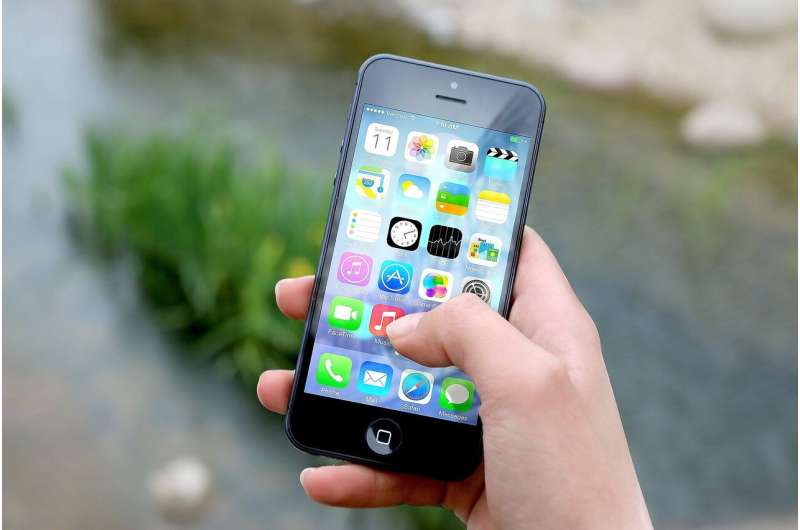This article has been reviewed according to Science X's editorial process and policies. Editors have highlighted the following attributes while ensuring the content's credibility:
fact-checked
trusted source
proofread
Assessing loan applicants' credit risk via smartphone activities helps improve financial inclusion, finds study

Financial technology (FinTech)—innovation in the delivery of financial services and products—has grown in popularity, expanding access to finance for millions of people. But while promoting inclusive finance to accelerate economic growth and financial sustainability is considered a good idea, there are challenges to balancing the socioeconomic tradeoffs.
In a new study, researchers sought to determine how data from smartphones and social media could ease financial inequality while preserving business profitability in financial credit risk assessment. The study found that assessing risk via loan applicants' smartphones was more effective than using social media data in improving financial inclusion and business profitability.
The study was conducted by researchers at Carnegie Mellon University (CMU), Arizona State University (ASU), and Peking University. It appears in MIS Quarterly.
"We have few insights into how financial institutions should balance the profitability-equality tradeoff," explains Beibei Li, associate professor of IT and management at CMU's Heinz College, who co-authored the study. "Alternative data provides a broader understanding of individual attributes, including those that might go unnoticed in conventional models."
FinTech offers microcredit to people with low incomes and entrepreneurs who have trouble getting financial support from traditional institutions. Using FinTech, microlending companies collect information from non-traditional sources about the creditworthiness of users, especially those with little or no credit history, and apply the information to big data analytics.
However, in using this approach, it has been difficult to determine the tradeoff between financial inclusion and profitability for businesses. As sources of consumers' digitized behavioral data (also called alternative data) from mobile devices have become more ubiquitous, researchers partnered with a microloan website in Asia to experiment on individuals' credit risks. They analyzed more than 5,200 loan applications from more than 5,200 borrowers.
Instead of randomly assigning applicants to subgroups with different selection algorithms, all applicants were approved for credit without any selection during the experimental period.
Researchers gathered conventional information, including attributes of the loan, applicants' demographic characteristics, the reason for the loan, and the applicants' loan history. They also collected alternative data, including applicants' online shopping activities, mobile activity records, and social media activities.
They subjected that information to a machine-learning training process to determine individual applicants' credit risks. Finally, they calculated both the economic gains to the microloan website and increases in financial equality.
Using conventional features favored higher-income and more-educated applicants from more economically developed areas, the study found. Leveraging alternative data from smartphone use and social media was more likely to include lower-income and less-educated loan applicants from less developed geographic areas, historically disadvantaged populations that have largely been neglected.
Profiling users' financial risk using smartphone activities was 1.3 times more effective in improving financial inclusion than using social media information (23% better versus 18% better), the study found. Similarly, using smartphones was nearly 1.3 times more effective in improving business profitability than using social media information (42% better versus 33%).
Using alternative data, especially users' smartphone activities, not only demonstrated higher ubiquity but also appeared to be more independent than using conventional sensitive demographic attributes.
"Our study is the first to investigate the economic value of alternative data," says Tian Lu, assistant professor of information systems at ASU's Carey School of Business, who led the study. "And it is among the first to identify different types of alternative data that contribute to improving financial inclusion in the microloan industry."
"Under our approach, microloan companies can adopt cost-effective solutions based on what is easier to implement," explains Yingjie Zhang, assistant professor of marketing at Peking University's Guanghua School of Management, who co-authored the study. "For example, incorporating alternative data can offset the potential economic loss caused by training-sample bias and lead to significant improvements in revenues."
Among the study's limitations, the authors note that they had access only to individuals' digitized user-behavior data during the loan application stage, so they could not predict their repayment behavior. In addition, the study's experimental design was based on fixed interest rates that did not vary with credit risk, number of applications, or other factors, which could have affected estimates of profitability.
More information: Profit vs. Equality? The Case of Financial Risk Assessment and a New Perspective on Alternative Data, MIS Quarterly (2023). DOI: 10.25300/MISQ/2023/17330. misq.umn.edu/profit-vs-equalit … lternative-data.html
Provided by Carnegie Mellon University's Heinz College




















